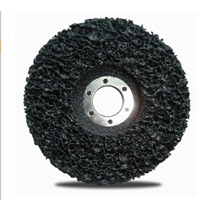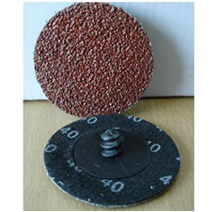cutting disc
Related
"Cutting Disc"
Products
Related "Cutting Disc" Keywords
Related blog
Cutting discs use the occasion
First, according to the occasion cutting disc use different choices. Cut pieces from the use of cutting approach stresses can be divided into classes and polished classes. Most of the cutting machine with fixed mobile, the power of the machine has power (> 5.5KW) and low power (<3KW) of the points. Cutting speed will have high-speed cutting (> 80m / s) and normal cutting two kinds. Another variety of cutting the material cut, such as stainless steel, titanium, ordinary steel, viscosity metals, high carbon steel, non-metallic. Different occasions on the cutting disc performance requirements are different, so that a reasonable choice cutting disc is essential. We want to use the occasion to according to their own choice of a good cutting discs, which can increase the safety factor, improve work efficiency, reduce our cost.
Both old and new concepts of wear of the grinding rollers
Grinding roller is directed to the rolling mill pressure metal processing tools. Grinding roll rolling between the rolling member and the contact between the grinding roller friction, resulting in wear of the grinding roll.The production of the rolling, grinding roll with a hard oxide withstand cyclic loading and temperature fluctuations, and in water vapor and air-oxidizing atmosphere, and the interaction of the surrounding liquid and gaseous media, subject to various types of wear mechanism together. In the hot rolling unit is organized according to the production, the amount of each roll a rolling finish replaced after grinding roll. Throughout the rolling units, roll grinding roll undergone great changes, there is a large amount of wear.As the wear of the grinding roller rolls deformation calculation accuracy, while tensile stress before be rolling pressure and pressure between rolls some impact, it established a grinding wheelroll wear model of the rolling process grinding roll wear prediction.Maintaining sheet flatness conditions:Old idea: that the elongation along the width of the same shape for good everywhere.Disadvantages: does not consider metal lateral flow.New concept: the plate-shaped transverse thickness difference flatness and influence each other.Advantages: Consider the lateral flow of metal to ensure flatness flatness and horizontal thickness deviation requirements are met.
Force and temperature effects caused by a diamond saw blades frayed donated loss
Force effects: In the sawing process, the saw blade by the axial force and tangential force. Since the role in the circumferential direction and the radial force exists, abrasive tools so that the saw blade in the axial smectic wavy, in the radial direction. Both deformation will result in the rock section is not straight, wasted stone sawing noise, cutting disc vibration intensified, resulting in diamond caking early damage, lower the saw blade life.Temperature effect: The traditional theory is that: the impact of temperature on the blade process mainly manifested in two aspects: First, the cause caking diamond graphite; caused by the diamond and carcass heat Woodland force and lead to premature loss of diamond particles . The new research shows that: the heat generated during the cutting process incoming caking. The arc zone temperature is not high, generally between 40 ~ 120 ℃. Abrasive grinding point temperature is high, generally between 250 ~ 700 ℃. The cooling liquid is only to reduce the average temperature of the arc area, the abrasive grain temperature was less affected. Such a temperature does not result in a graphite carbonized, but it will change in properties of the friction between the abrasive grains and the workpiece, the thermal stress occurs between the make diamond with additives, resulting diamond failure mechanism fundamental bending. The study showed that the temperature effect the greatest impact of the blade broken.
Glass cutting
The high hardness and brittleness of the glass (including germanium, silicon and other semiconductor material). abrasive tools Machining commonly used of the cutting wheel, drilling, grinding and polishing.The most simple method of cutting a glass sheet thickness of 3 mm or less, that is: the manual scribing the glass surface with a diamond or other hard substance, the use of the score at the stress concentration can be hand broken.Mechanical cutting of the glass, general use of a thin plate (or stainless steel sheet) made of circular saw blades, and to add abrasive and water in the cutting process. Commonly used abrasives is a particle size of about No. 400 of silicon carbide or diamond. When the rod-shaped semiconductor ingot cut to a thickness of about 0.4 mm of the wafer, using an annular circular saw blade, cutting its inner circumference on the rod-like ingot, cutting a wafer of a thickness of 0.4 mm, the slit width 0.1 to 0.2 mm. Square wafer plane of the cut is often used to direct draw scratches broken sheet wheel, circular wafers may also be used ultrasonic cutting. Grinding and polishing glass works with metal similar. The surface of the glass after polishing is translucent fuzz surface, must be glossy surface after polishing to become transparent. Polishing pressure is generally 1000 to 3000 Pa, the abrasive particle size of available W5 ~ 20 of quartz sand, corundum, silicon carbide or boron carbide, and abrasive water ratio of about 1:2. Glass after grinding, the formation of matte side often leaving the average depth of 4 to 5 microns of the uneven layer, and individual crack depth list, so the polishing is often required to remove the glass layer 20 microns thick, this thickness is approximately polishing removal the amount of about 1/10, but the polishing time than the grinding length (hours to several tens of hours). Polishing disc material is usually felt, wool, or plastic, the abrasive used is a particle size of less than W5, iron oxide (Pink), such as cerium oxide and zirconium oxide powder (less than 5 microns in diameter). Grinding prepare a suspension of the same amount of water as a polishing agent, preferably 5 ~ 20 ℃ ambient temperature effect.



 Check for detail
Check for detail
